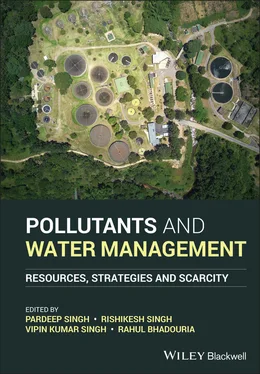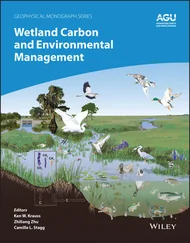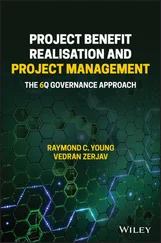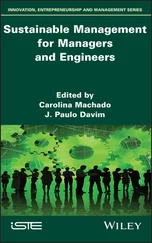Pollutants and Water Management
Здесь есть возможность читать онлайн «Pollutants and Water Management» — ознакомительный отрывок электронной книги совершенно бесплатно, а после прочтения отрывка купить полную версию. В некоторых случаях можно слушать аудио, скачать через торрент в формате fb2 и присутствует краткое содержание. Жанр: unrecognised, на английском языке. Описание произведения, (предисловие) а так же отзывы посетителей доступны на портале библиотеки ЛибКат.
- Название:Pollutants and Water Management
- Автор:
- Жанр:
- Год:неизвестен
- ISBN:нет данных
- Рейтинг книги:3 / 5. Голосов: 1
-
Избранное:Добавить в избранное
- Отзывы:
-
Ваша оценка:
- 60
- 1
- 2
- 3
- 4
- 5
Pollutants and Water Management: краткое содержание, описание и аннотация
Предлагаем к чтению аннотацию, описание, краткое содержание или предисловие (зависит от того, что написал сам автор книги «Pollutants and Water Management»). Если вы не нашли необходимую информацию о книге — напишите в комментариях, мы постараемся отыскать её.
WATER MANAGEMENT Pollutants and Water Management: Resources, Strategies and Scarcity
Pollutants and Water Management
Pollutants and Water Management: Resources, Strategies and Scarcity
Pollutants and Water Management — читать онлайн ознакомительный отрывок
Ниже представлен текст книги, разбитый по страницам. Система сохранения места последней прочитанной страницы, позволяет с удобством читать онлайн бесплатно книгу «Pollutants and Water Management», без необходимости каждый раз заново искать на чём Вы остановились. Поставьте закладку, и сможете в любой момент перейти на страницу, на которой закончили чтение.
Интервал:
Закладка:
Both the groundwater and surface water quality are not qualifying criteria for potable water in most parts of the country. Surface water is continuously facing quality issues due to the discharge of sewage and industrial and agricultural wastes. Groundwater in India is affected by heavy metals (As, Fe, Pb, U) and anions (F −, NO 3 −, SO 4 2−) in different parts of the country.
Table 1.4 Number of states and districts affected by geogenic contamination in groundwater.
Source: CGWB (2019).
| Contaminants | No of affected states | No of affected districts |
|---|---|---|
| Arsenic (As) | 10 | 68 |
| Fluoride (F −) | 20 | 276 |
| Nitrate (NO 3 −) | 21 | 387 |
| Iron (Fe) | 24 | 297 |
1.4 The Impact of Climate Change on the Quantity of Water Resources
Climate change affects water resources through warming of the atmosphere, alterations in the hydrologic cycle, glacier melting, rising sea levels, and changes in precipitation patterns (amount, timing, and intensity). In the Indian scenario, due to the alteration of monsoon patterns, rainfall becomes more intense and cumbersome, and it is concentrated on fewer rainy days. Climate change influences the quantity of water resources of India through the impact on glaciers, groundwater, and flood events. The probable climate change impacts on water resources of India are depicted through the flow diagram in Figure 1.1.
1.4.1 Rainfall
Using decade‐wise average rainfall annual data of 116 years of data (1901–2019), no significant trend was observed for annual rainfall on a national basis ( Figure 1.2). However, a decreasing trend in annual rainfall was observed across India since the year 2000. This data set is based on more than 2000 rain gauge data spread over the country.
Climate change has affected the rainfall pattern of India in the form of fewer rainy days, but more extreme rainfall events. This is resulting in an increased amount of rainfall in each event, leading to significant flooding. Most of the global models suggest that Indian summer monsoons will intensify. The timing of seasonal variation may also shift, causing a drying during the late summer growing season. There has been a significant change in precipitation and temperature pattern in India from 2000 to 2015. This could indicate a signature of climate change in India (Goyal and Surampalli 2018).
1.4.2 Glaciers
Around 9040 glaciers have been reported in India, covering nearly 18 528 km 2in the Indus, Ganges, and Brahmaputra basins (Sangewar et al. 2009; Sharma et al. 2013). Any changes in a glacier can affect river run‐off and the water availability in the Himalayan rivers (Indus, Ganges, and Brahmaputra) and agricultural practices in India. The annual rate of glacial shrinkage is reported to be nearly 0.2–0.7% in the Indian Himalayan region for 11 river basins during the period 1960–2004 with a mean extent of 0.32–1.40 km 2(Kulkarni et al. 2011; Bolch et al. 2012). Ramanathan (2011) reported the mass balance of Chhota Shigri glacier (15.7 km 2), located in the Chandra River basin of Himachal Pradesh, showed a net loss of about 1000 m from 2002–2009. The flow diagram demonstrating the impact of climate change on glaciers is depicted in Figure 1.3.
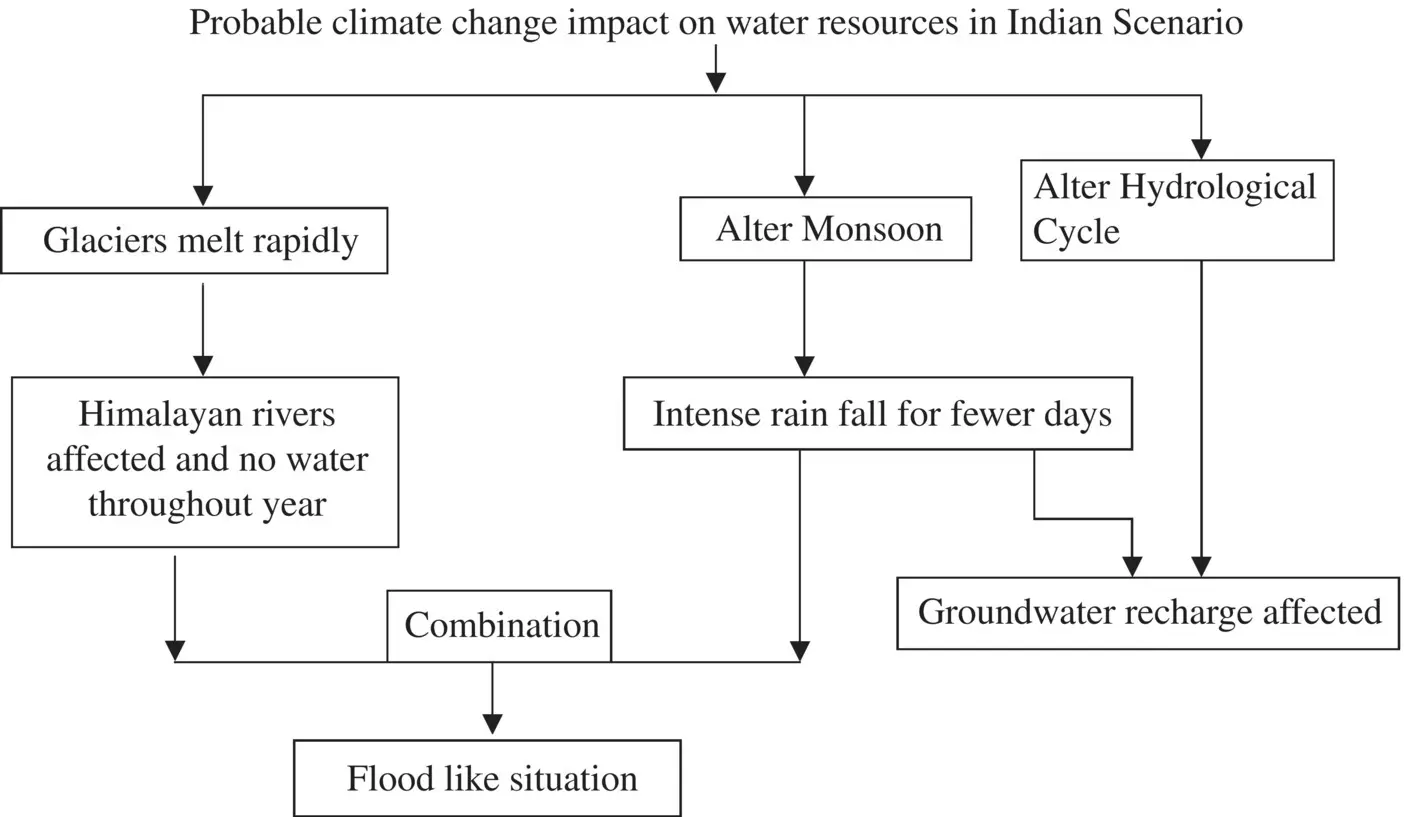
Figure 1.1 Impact of climate change on water resources.
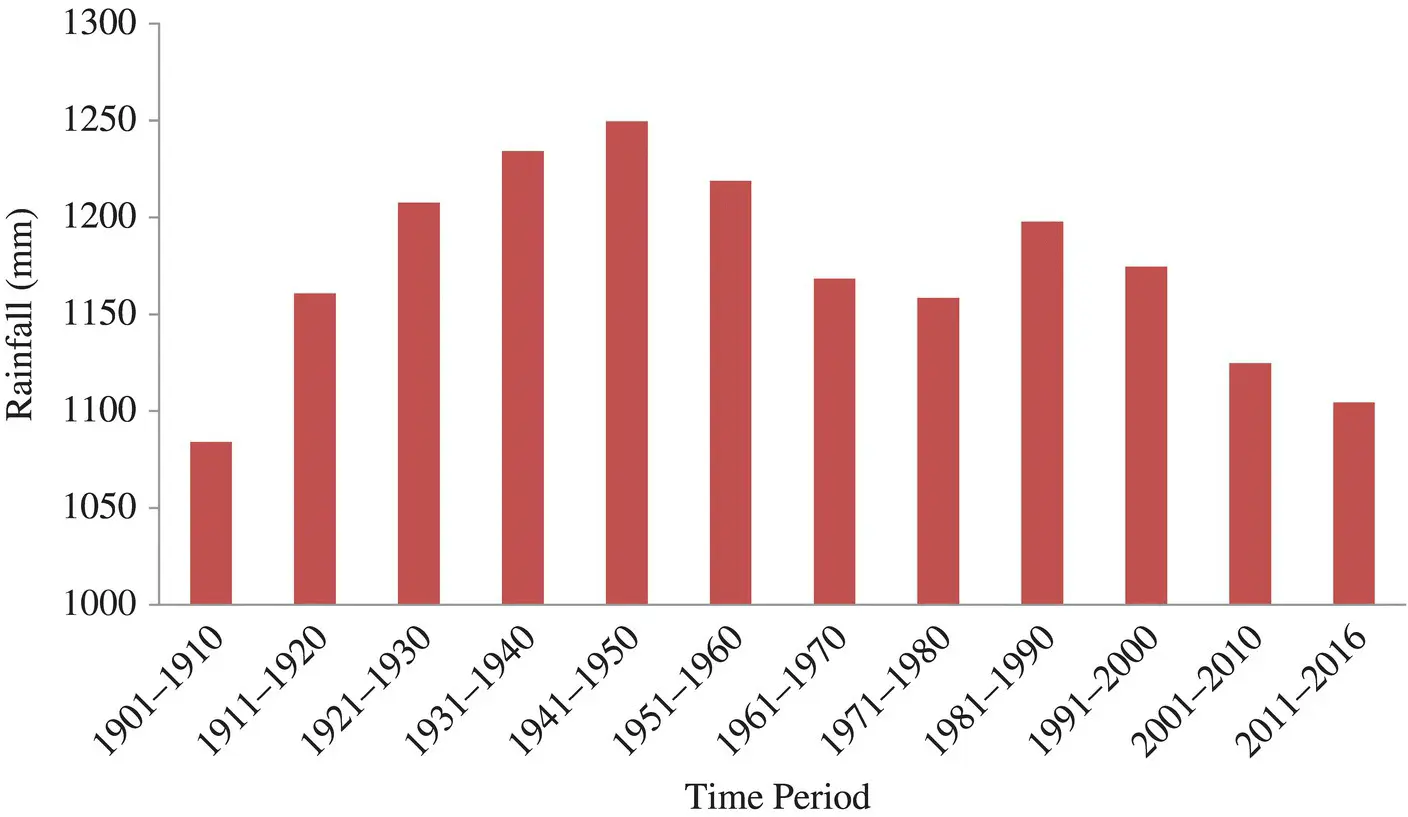
Figure 1.2 Decade‐wise average rainfall annual data of India.
( Source: Envi Stats India 2018; https://data.gov.in/keywords/annual‐rainfall.)
In India, climate change is expected to affect Himalayan rivers (Ganges and Brahmaputra) due to the faster rate of melting of Himalayan glaciers. Himalayan glaciers are known as the “Water Tower of Asia,” a major source of water in all major Asian rivers (Shiva 2009). As per the Intergovernmental Panel on Climate Change (IPCC), these glaciers are receding faster than any other part of the world (IPCC 2007). The Gangotri glacier (source of the river Ganga), receded 20–23 miles/year, whereas other glaciers can retreat more than 30 miles/year as a result of rising temperatures (Shiva 2009). If the conditions continue, glaciers will melt quicker and no glaciers will be left to supply water for the entire year, then rivers like Brahmaputra and Ganges will become seasonal rivers. In the monsoon season, the combination of the heavy melting of glaciers and intense heavy rainfall for fewer days may create a flash flood‐like situation. On the other hand, reduced rainfall in the rest of the year may lead to drought in some regions. Chevaturi et al. (2016) illustrated the climate change impact on the northern region of Ladakh. The Ladakh area is unique due to its location in high altitude, dry desert with cold temperatures, and water flows to the mountains. Research showed a warming trend with reduced seasonal precipitation, making it highly sensitive to temperature changes.
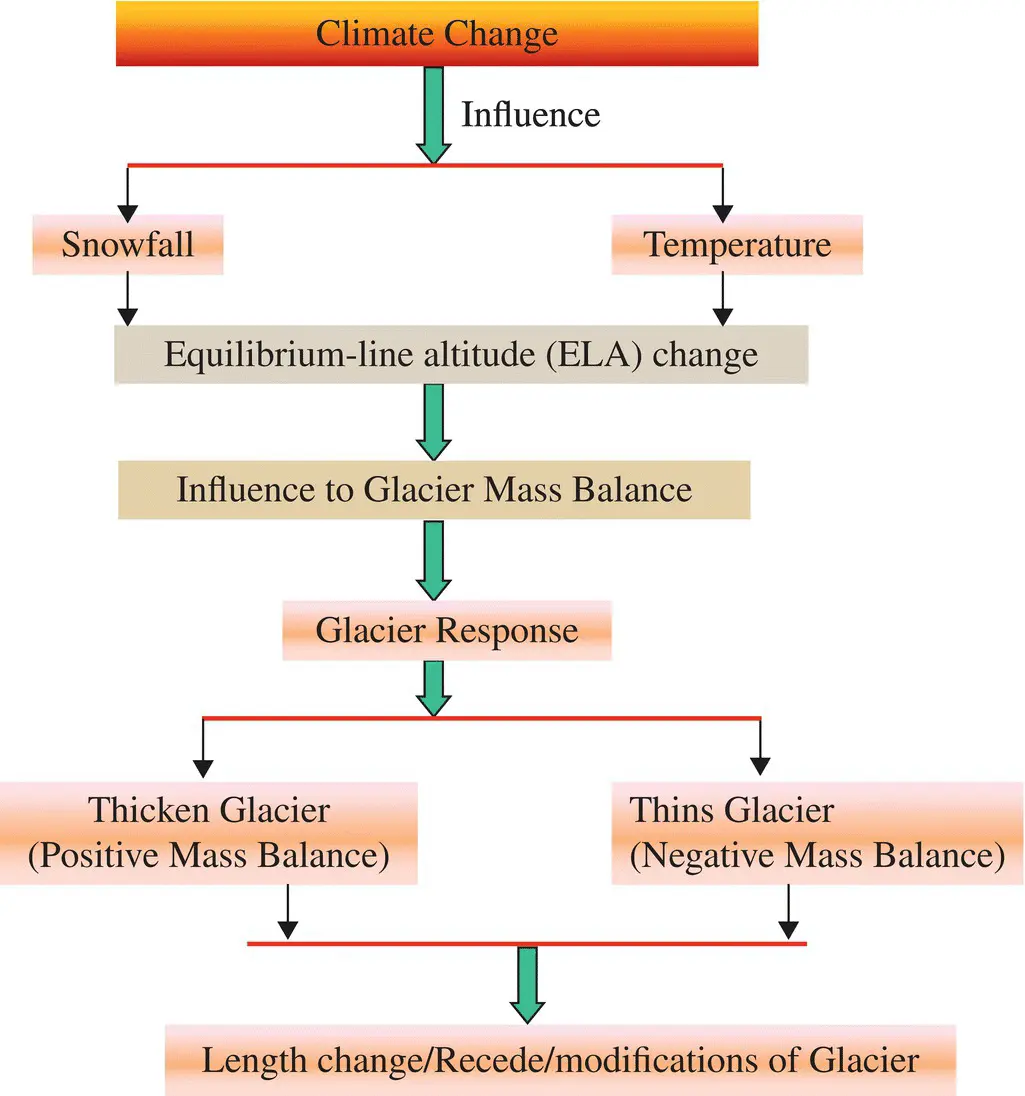
Figure 1.3 The flow diagram of the impact of climate change on glaciers.
( Source: Pandey and Venkataraman 2012.)
1.4.3 Sea Level
Rising sea levels and flooding are the biggest threats of climate change. As temperature rises, ice melts and water level rises. This threatens to engulf coastal areas and cause mass displacement and loss of life. Initial predictions expected a sea‐level rise of over 59 cm by 2100, but current rates will likely exceed this by a wide margin. According to Pandve (2010), a sea‐level rise of 1 m would inundate up to 5763 km of India, as many cities lie only a few feet above sea level, making severe coastal floods.
1.4.4 Groundwater
Groundwater resources are affected due to an inadequate amount of water percolating down to aquifers due to reduced rainfall. The increased atmospheric temperature also increases the rate of evapotranspiration, which leads to a reduction in the actual amount of groundwater available for human use. India extracts 1000 km 3of groundwater annually, which is 25% of groundwater at a global level (Mukherji 2019).
Climate change affects Indian water resources through warming of the atmosphere, alterations in the hydrologic cycle, melting of glaciers, rising sea levels, and changes in precipitation patterns (amount, timing, and intensity). The alteration of monsoon patterns decreases rainy days but increases the amount of rainfall. Himalayan glaciers are receding faster than any other part of the world. Further, the combined impacts of changes in precipitation patterns, glaciers melting, and sea‐level rise has caused flood‐like situations in different parts of the country. One noticeable thing, if the conditions continue, glaciers will melt quicker and no glaciers will be left to supply water for the entire year, then rivers like Brahmaputra and Ganges will become seasonal rivers.
1.5 Impact of Climate Change on the Quality of Water Resources
The impact of climate change on water quality has not gained much concern as an emerging topic in water research to date. However, possible effects are discussed with the association of health as depicted in Figure 1.4. Floods and droughts also affect the surface water qualitatively (in terms of pollutant concentration) and quantitatively. Whenever drought condition persists, the groundwater resources are depleted and the concentration of the pollutants are elevated in the residual water (IPCC 2007). Changes in precipitation or hydrological pattern and increased run‐off can result in the rise of pathogens and contaminants in water bodies. Increased frequency and intensity of rainfall may cause more water pollution due to run‐off water. The decrease in dissolved oxygen in water due to the increase in the temperature of the water is the direct consequence of climate change on water quality. Further, the concentration of dissolved carbon, phosphates, nitrates, and micropollutants are also directly altered as a consequence of climate change and they produce an adverse impact on health (Delpla et al. 2009).
Читать дальшеИнтервал:
Закладка:
Похожие книги на «Pollutants and Water Management»
Представляем Вашему вниманию похожие книги на «Pollutants and Water Management» списком для выбора. Мы отобрали схожую по названию и смыслу литературу в надежде предоставить читателям больше вариантов отыскать новые, интересные, ещё непрочитанные произведения.
Обсуждение, отзывы о книге «Pollutants and Water Management» и просто собственные мнения читателей. Оставьте ваши комментарии, напишите, что Вы думаете о произведении, его смысле или главных героях. Укажите что конкретно понравилось, а что нет, и почему Вы так считаете.
